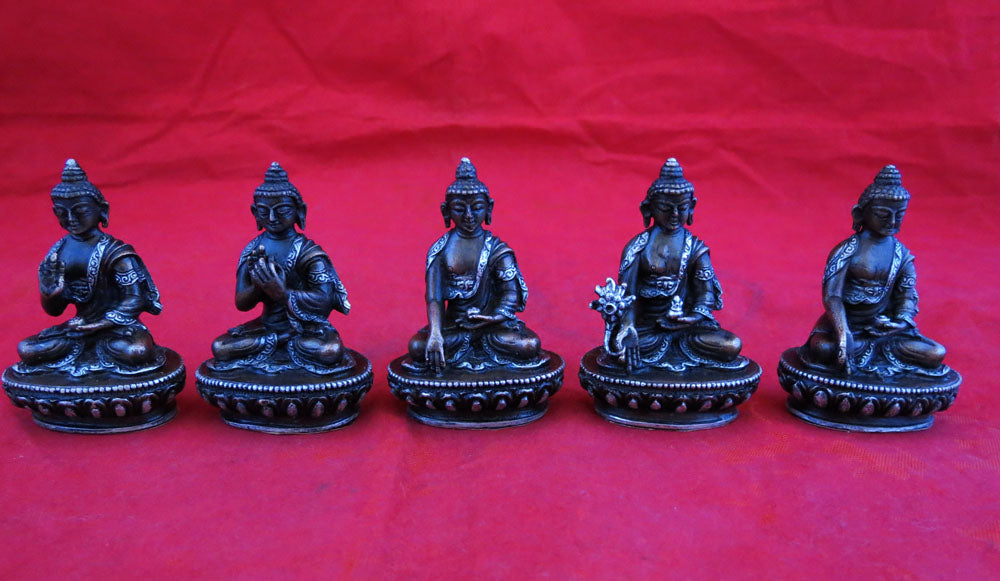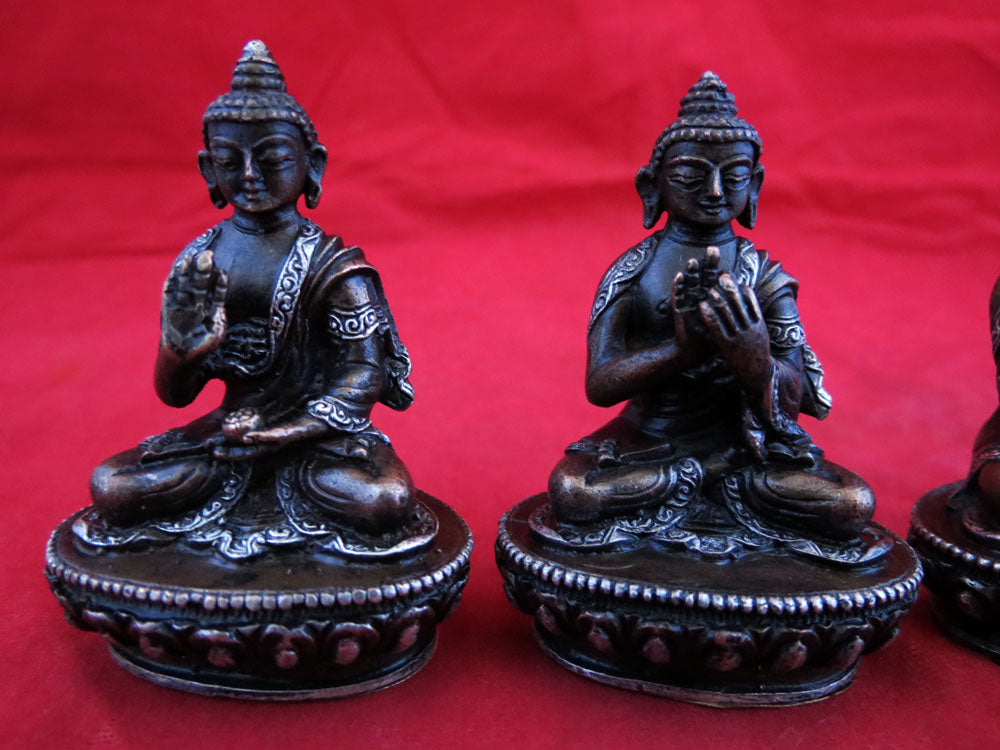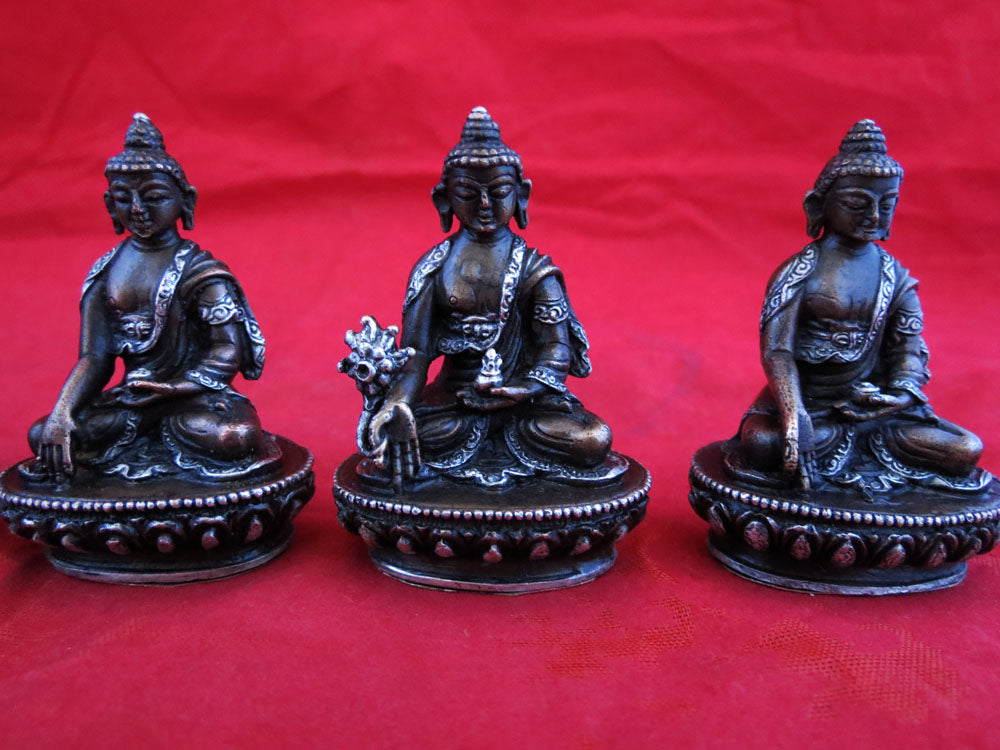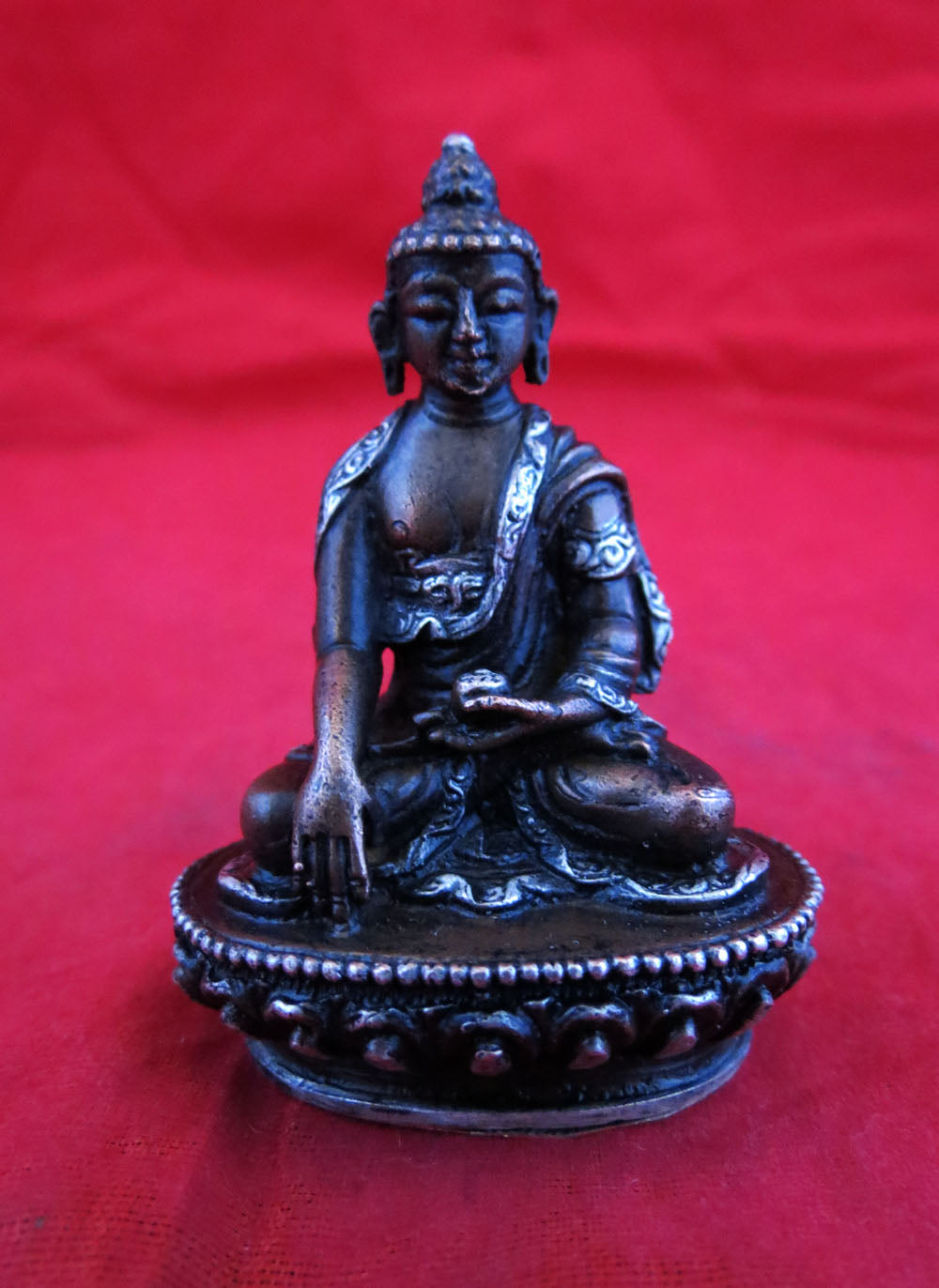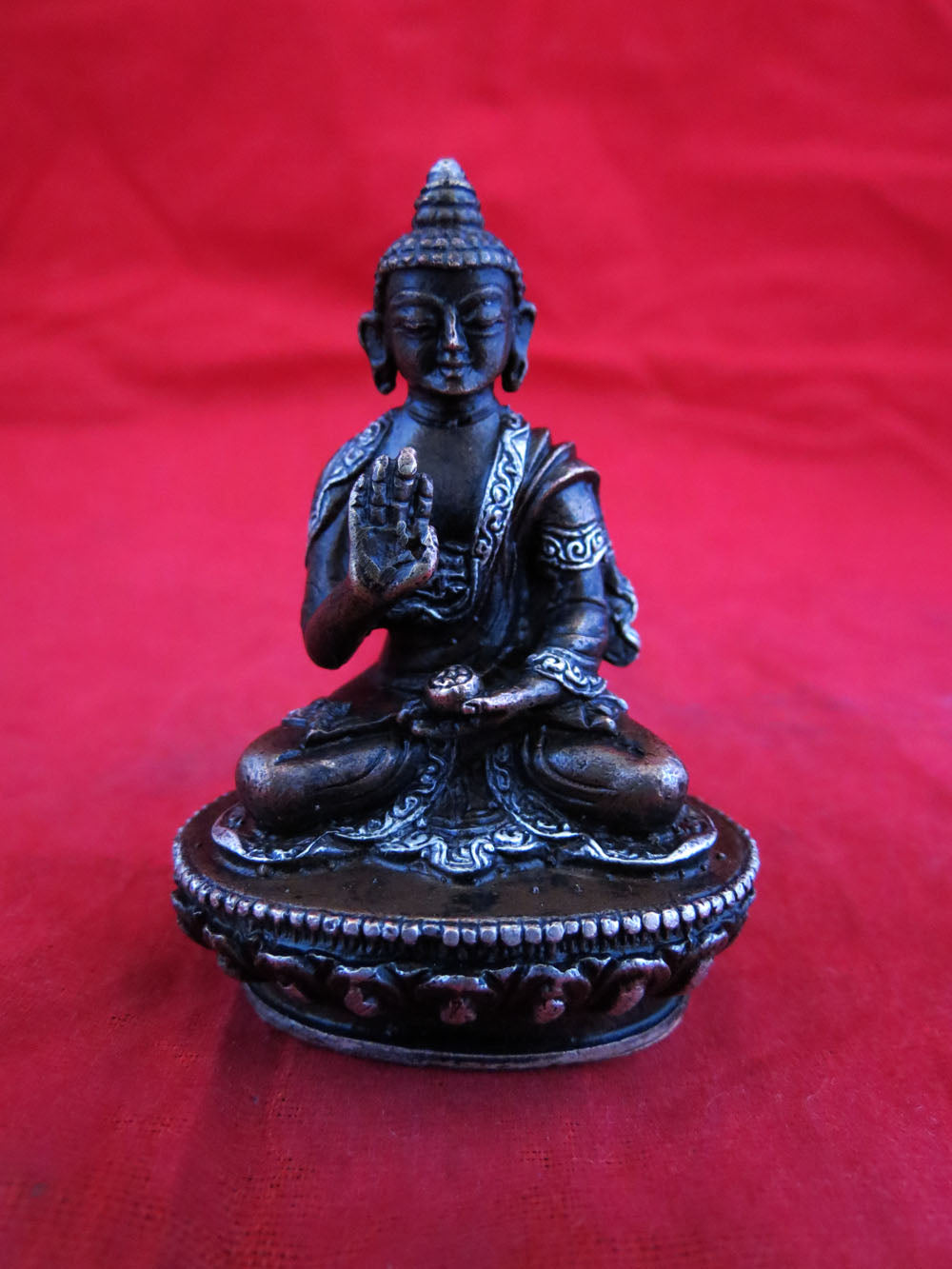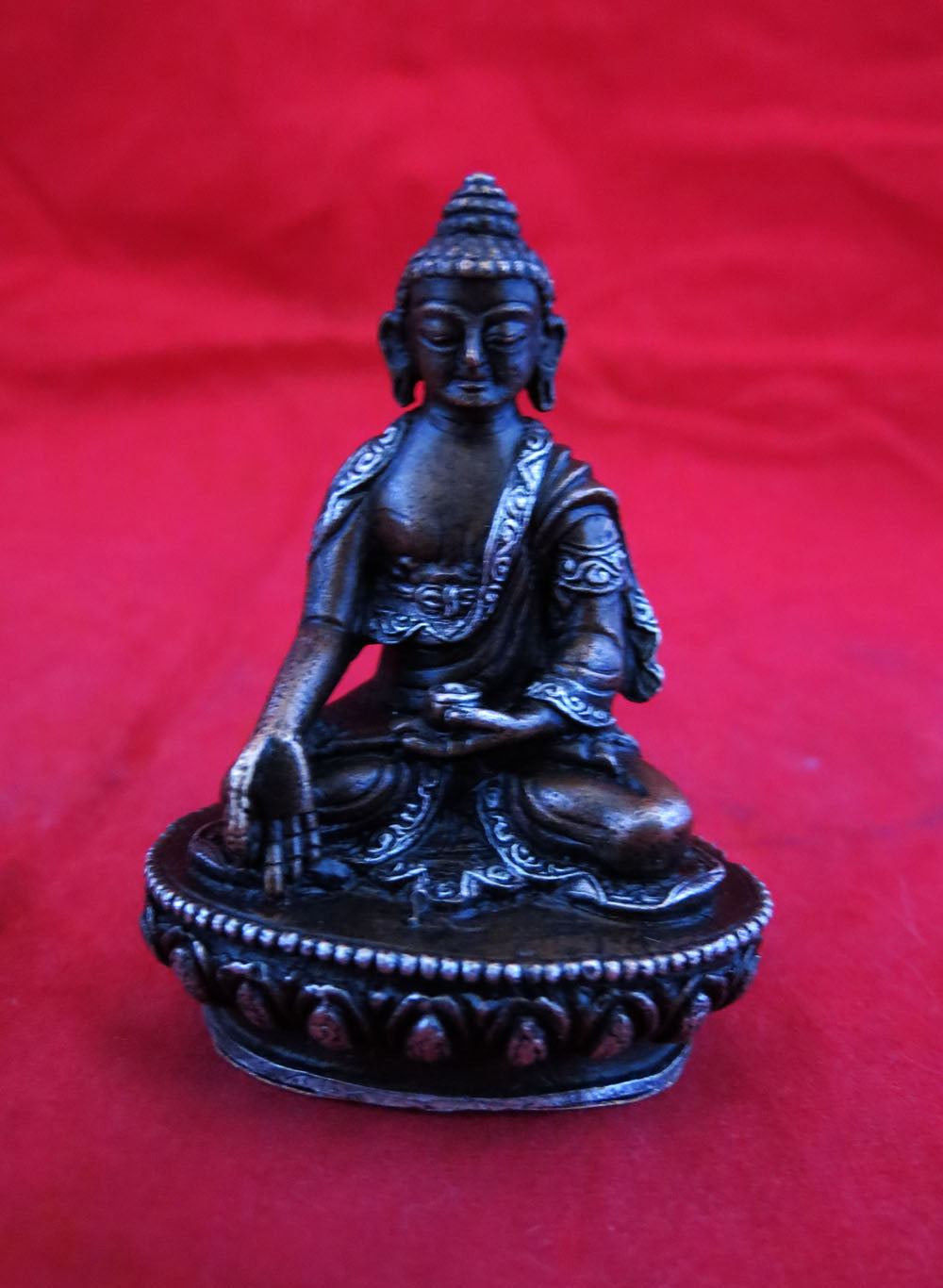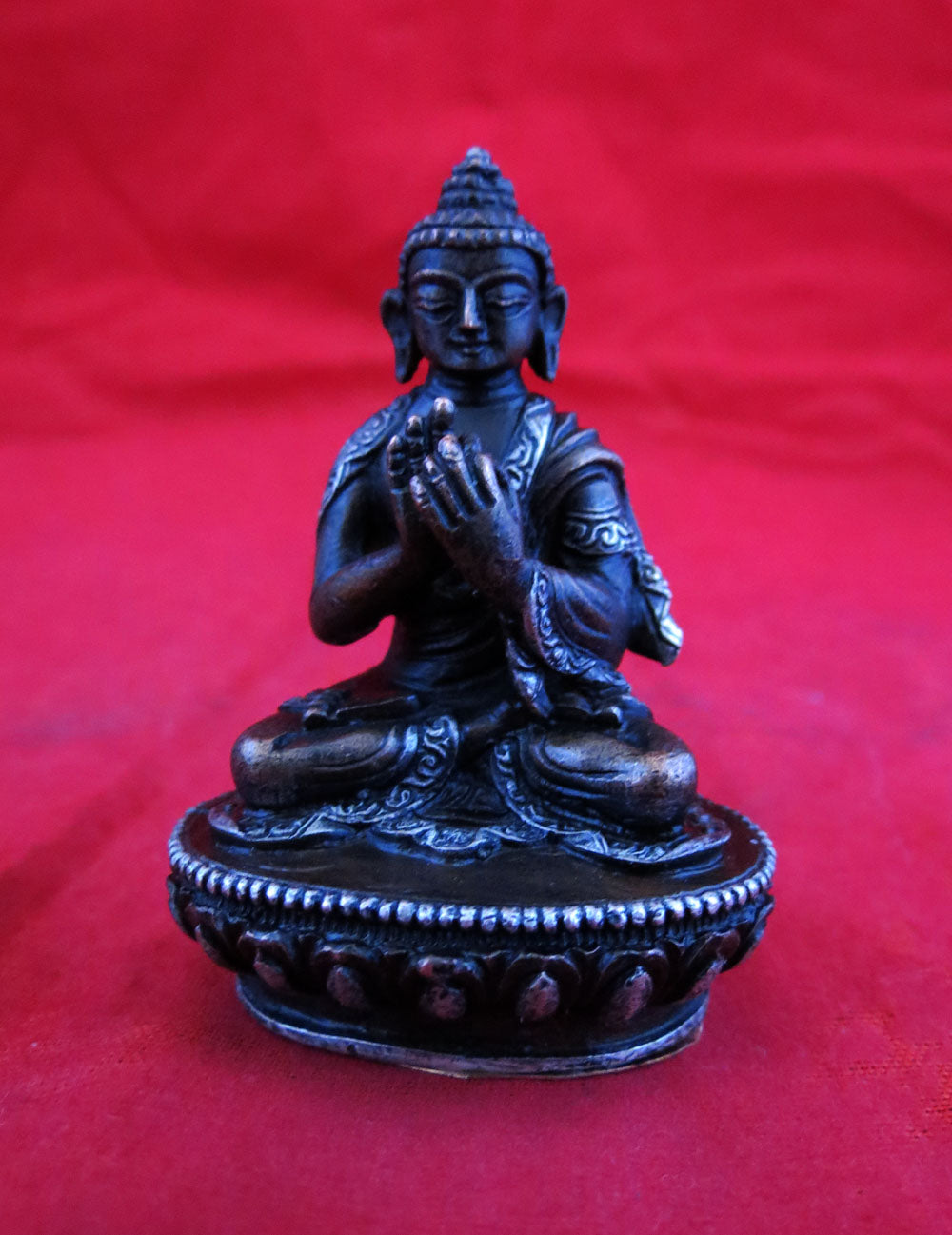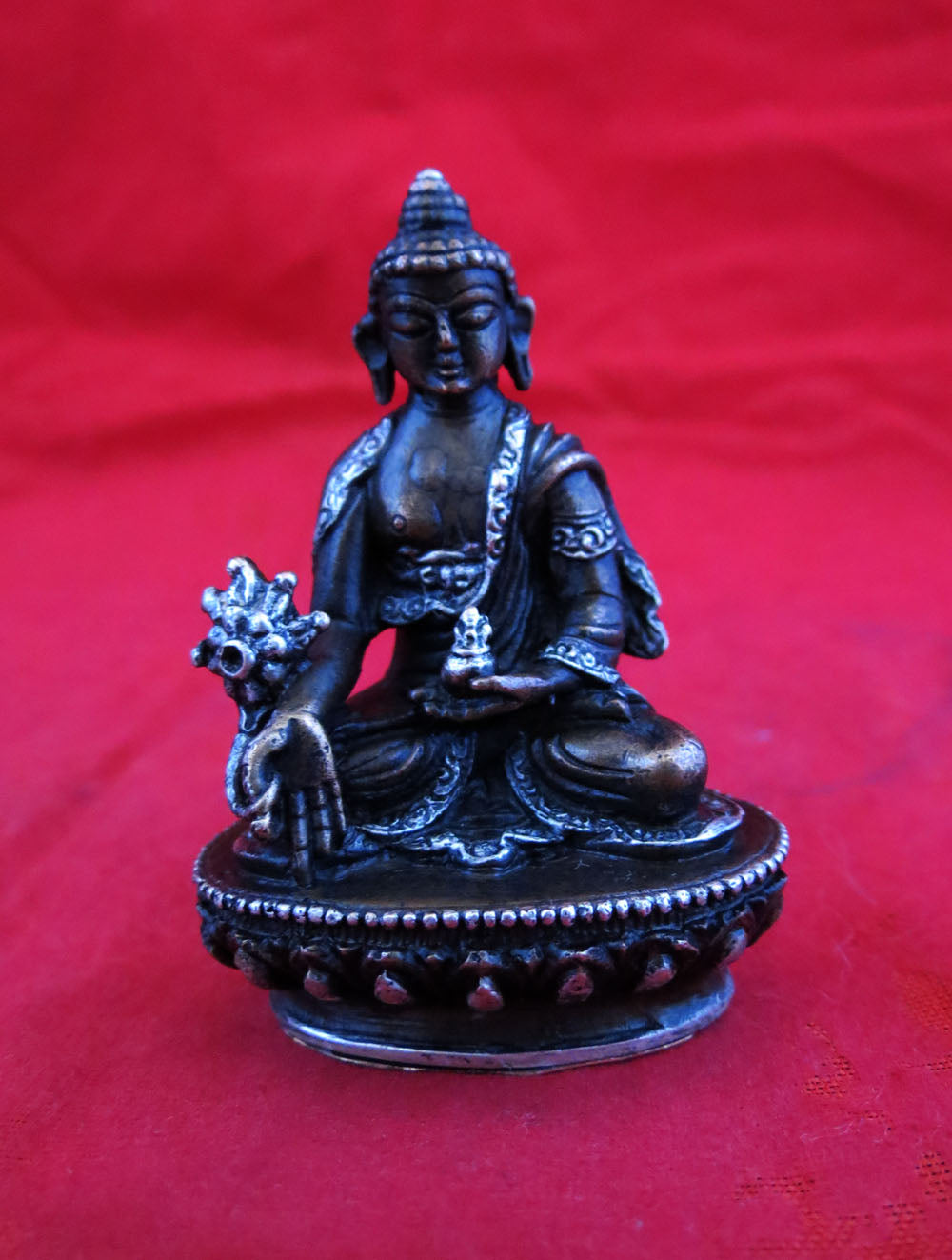1
/
of
8
Lord 5 Dhyani Buddha (Pancha Buddha) Copper Silver Oxide Small Statue Figure Nepal
Lord 5 Dhyani Buddha (Pancha Buddha) Copper Silver Oxide Small Statue Figure Nepal
Regular price
$145.00 USD
Regular price
Sale price
$145.00 USD
Unit price
/
per
Shipping calculated at checkout.
Couldn't load pickup availability
This Beautiful Handmade 5 Dhyani Buddha (Pancha Buddha) Copper Silver Oxide Statue made by Artists of Nepal.
Five Pancha Buddha Definition The definition of these Five Buddhas are explained below.
Dharmachakra Mudra – Vairochana is regarded as the first Dhyani Buddha in Nepalese/Tibetan Buddhism. He or she represents the actual cosmic element of Rupa (form). His two hands tend to be kept against the chest with the tips of the thumbs and forefingers of every hand united. This mudra is known as Dharmachakra Mudra that is the gesture of Teaching. Literally, Dharma indicates “Law” and Chakra means wheel and usually interpreted switching the actual Wheel of Law. It is also motion associated with fingers exhibited by Lord Buddha while speaking their first sermon at Sarnath.
Bhumisparsa mudra – Akshobhya is regarded as the 2nd Dhyani Buddha in Nepalese/Tibetan Buddhism. He represents the actual primordial cosmic component of Vijnana (consciousness). Buddha Akshobhya can be seen occasionally with an elephant symbolizing the working character of their Bodhisattva vows. His right hand shows the actual Bhumisparsa (earth-touching) mudra. This particular hands gesture is related with the life of Shakyamuni Buddha. When Shakyamuni Buddha was on the way to ultimate Enlightenment, he had to face each internal and external Maras. It’s believed that Devaputra Mara questioned him on the credibility associated with his accomplishment of Enlightenment and the excellence of Paramita. At that time, his only witness was the earth. Buddha Shakyamuni requested mother earth to deal as the witness to his achievement of Enlightenment. To indicate this particular, he touched our planet with his right hand as witness to his excellence. This gesture, called “touching the actual earth” (Bhumisparsa Mudra), became Buddha Akshobhya’s Mudra.
Varada Mudra - Ratna Sambhava is regarded as the third Dhyani Buddha. He signifies the cosmic component of Vedana (feeling). His acknowledgement image is the jewel and he displays the Varada Mudra. Their right hand lies open near to his right knee. His left hand is seen holding an alms bowl. Within Sanskrit, Varada indicates ‘granting the boon’. The motion shows the best hand switched towards the receiver of boons, using the fingers directed downwards.
Dhyana Mudra — Amitabha Buddha is the most ancient Buddha among the Dhyani Buddhas. He is said to reside in the actual Sukhabati heaven in peaceful meditation. He is seated in a meditating position. This Mudra is known as ‘Dhyanamudra’. His hands are joined with the right on the left, two thumbs touching each other. An alms bowl is in between their 2 palms. Here the actual meditating hand gesture represents the actual unity of wisdom and compassion.
Abhaya Mudra – Amoghsiddhi is the 5th Dhyani Buddha in order. He or she represents cosmic component of Samskar (Conformation). His left hand is open on the lap and the right displays the Abhaya Mudra. The gesture is associated with fearlessness and safety, usually shown as the left hand with palm turned to the outside and all fingers prolonged upwards. The symbolic meaning of the dispelling fear pose is an interpretation of the motion of preaching. It is said that people gain fearlessness by following the Bodhisattva path.
Share
Size
Size
Height : 2.2 inches approx
Wide : 1.5 inches approx
Total Weight : 350 gm approx
Weight
Weight
Weight : 355 gm approx
Shipping
Shipping
We ship within 1 business day.
Standard Shipment time 5 to 10 business days with tracking number.
We won't ship to Iraq, Myanmar, Russia, North Korea and Afghanistan.
Import Taxes, duties, charges not including, paid by buyer.
Note
Note
Item picture maybe slightly color different because of Light.
